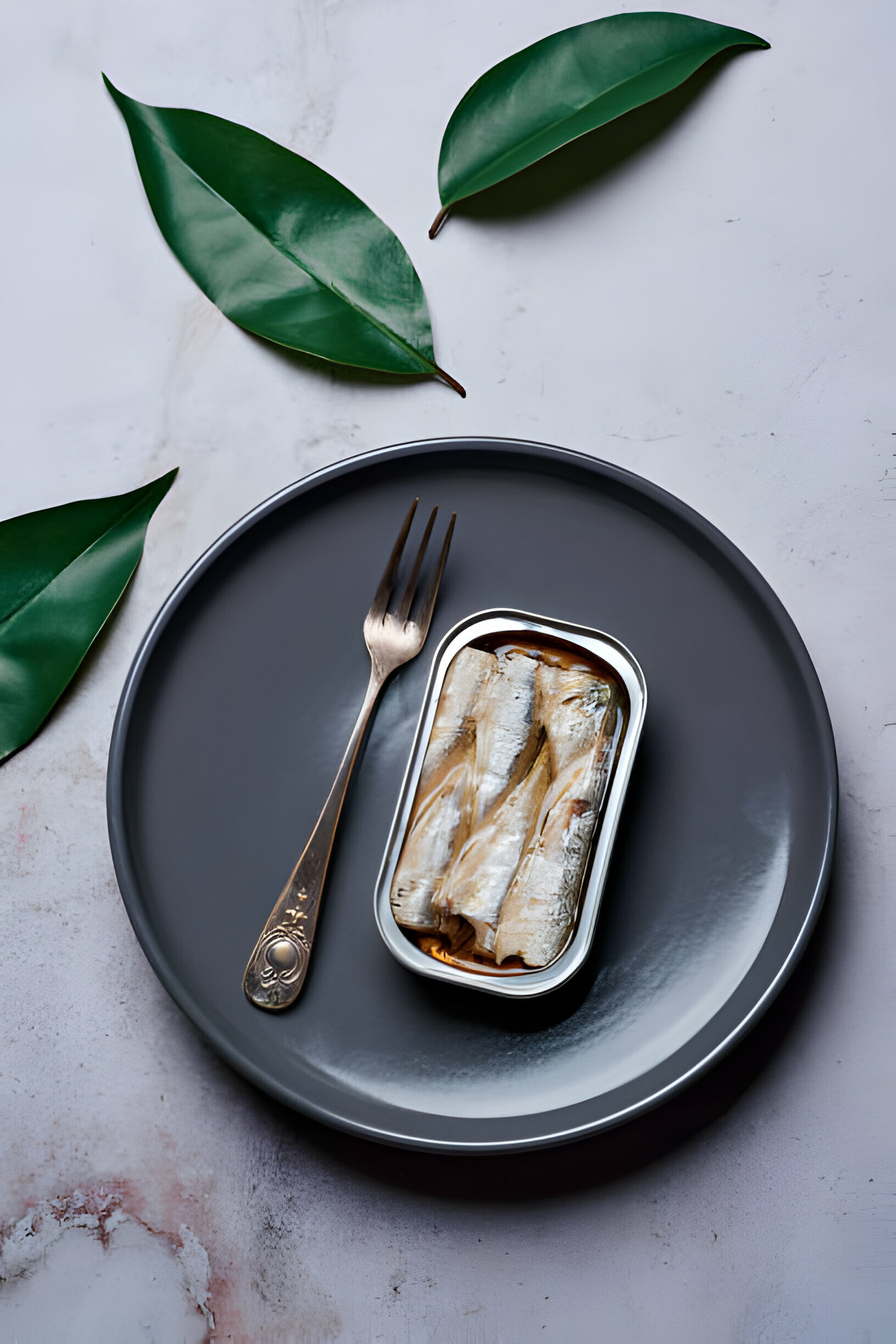Savor some savory canned pilchards sans stove! If you’ve ever pondered popping open a can and munching away, this article is just for you. From safety tips to scrumptious recipes, we’ll dive into the debate on whether you can devour these delectable fish straight from the can. So, grab a fork and let’s explore the world of canned pilchards together!
Safety Concerns
You shouldn’t eat canned pilchards without cooking them first to avoid any potential safety concerns. Proper handling of canned seafood is crucial to prevent contamination and ensure quality control. Before consumption, a risk assessment should be conducted to evaluate the shelf stability of the product. Contamination prevention measures are essential in maintaining food safety standards. Quality control checks during processing help minimize any risks associated with consuming raw seafood products like pilchards. By following these guidelines, you can enjoy your canned pilchards safely while appreciating the convenience they offer. Remember, a little caution goes a long way in safeguarding your health when it comes to consuming canned seafood products.
Nutritional Value
The nutritional value of canned pilchards is high, providing a good source of omega-3 fatty acids and protein. These tiny fish are packed with essential nutrients like vitamins D and B12, making them a fantastic protein source that supports your overall health. With the Omega 3 benefits they offer, canned pilchards can help boost brain function and reduce inflammation in your body. Not only are they a convenient and easy snack straight out of the can, but they also serve as a budget-friendly option for adding nutrition to your meals. So next time you’re looking for a quick bite or an affordable way to enhance your diet with vital nutrients, reach for some canned pilchards!
Serving Suggestions
Serving as a versatile ingredient, canned pilchards can be added to salads for an extra boost of flavor and nutrition. Here are some ways you can enjoy them:
- Quick snacks: Grab a cracker or toast point, add a dollop of mashed pilchards mixed with herbs, and enjoy a flavorful bite in no time.
- Creative pairings: Experiment by pairing pilchards with unexpected ingredients like avocado or mango for a unique twist on traditional flavors.
- Easy lunches: Make a simple pilchard salad by mixing them with fresh veggies, drizzling olive oil and lemon juice on top for a quick and satisfying meal option.
Try these ideas to elevate your meals with tasty salads and flavorful toppings!
Health Benefits
Indulging in canned pilchards can provide a range of health benefits due to their high omega-3 fatty acid content. These oils are excellent for heart health, helping to lower blood pressure and reduce the risk of heart disease. Additionally, the omega-3s support brain function, aiding cognitive abilities and potentially reducing the risk of neurodegenerative diseases. For weight management, these fatty acids can help boost metabolism and promote fat burning. The immune system also benefits from the consumption of canned pilchards, as omega-3s have anti-inflammatory properties that support overall immune function. Furthermore, your skin can enjoy improvements in elasticity and hydration with regular intake of these fish packed with essential nutrients.
Culinary Uses
When cooking, consider incorporating canned pilchards into pasta sauces or salads for a flavorful boost. These small fish can add a punch of taste and nutrition to your dishes. Here are some tips for making the most out of canned pilchards:
- Flavor Pairings:
- Try pairing canned pilchards with lemon, garlic, and fresh herbs like parsley or dill for a zesty flavor profile.
- Combine them with tomatoes, olives, and capers for a Mediterranean-inspired dish.
- Cooking Techniques:
- Use canned pilchards in pasta sauces by gently heating them through to avoid overcooking.
- Mash them with avocado and spread on toast for a quick snack.
- Presentation Ideas:
- Top pizzas with canned pilchards for a unique twist.
Incorporate these ideas into your meals to stay on top of culinary trends while enjoying delicious flavors.
Storage Recommendations
To maintain the quality of canned pilchards, store them in a cool, dry place away from direct sunlight. Proper storage is essential for preserving the flavor and texture of the fish. Canned pilchards have a long shelf life when stored correctly. If you open a can but don’t use all the contents, refrigeration tips suggest transferring the leftovers to an airtight container before placing them in the fridge. This helps keep them fresh for longer. While room temperature storage is suitable for unopened cans, freezing options are also available if you want to extend their shelf life further. By following these storage recommendations, you can enjoy your canned pilchards at their best quality whenever you decide to indulge in them.
Canned Vs. Fresh Debate
When it comes to the canned vs. fresh debate with pilchards, there are several factors to consider.
Markdown list:
- Taste comparison: Fresh pilchards often have a more delicate flavor compared to their canned counterparts.
- Price differences: Canned pilchards are usually more cost-effective than purchasing fresh ones.
- Convenience factor: Canned pilchards offer quick and easy meal solutions without the need for preparation.
While canned pilchards may win in terms of price and convenience, availability issues can arise depending on your location. Additionally, there are environmental impacts to consider when choosing between canned and fresh options due to packaging and processing methods used in each case. Ultimately, weighing these factors will help you decide which option best suits your needs and preferences.
Popular Recipes
Contrary to popular belief, fresh ingredients can elevate a dish from good to exceptional. When it comes to popular recipes, incorporating quick snacks into your daily routine can be a game-changer. Opting for budget meals doesn’t mean sacrificing flavor; simple ingredients combined thoughtfully can create delicious comfort food that warms the soul. For lunch ideas, consider preparing hearty salads with vibrant vegetables and protein-packed toppings for a satisfying midday meal. Party appetizers are another area where you can get creative – think about assembling colorful bruschetta or flavorful mini sliders to impress your guests. Experimenting with these diverse options will surely take your culinary skills to the next level!
Sustainability Practices
Exploring sustainable practices in the kitchen can lead to a more eco-friendly approach to cooking and meal preparation. When you embrace sustainability, you not only help the environment but also make a positive impact on your health and well-being. Here are some key aspects to consider:
- Eco-Friendly Packaging: Opt for products that use minimal or recyclable packaging to reduce waste.
- Sustainable Sourcing: Choose ingredients that are ethically sourced and support local farmers and producers.
- Carbon Footprint: Be mindful of how your food choices impact the environment by selecting items with lower carbon footprints.
Best Practices for Consumption
Implementing sustainable practices in your kitchen can lead to a more eco-friendly approach to meal preparation and cooking. When it comes to quick snacks, opt for fresh fruits or veggies instead of packaged treats. For breakfast options, consider overnight oats using locally sourced ingredients. For lunch ideas, try making a colorful salad with seasonal produce or a hearty veggie wrap. Dinner recipes could involve plant-based proteins like lentils or chickpeas for sustainability. To kick off your meal, appetizer pairings such as hummus with whole-grain crackers or guacamole with veggie sticks are great choices. By incorporating these options into your daily meals, you’re not only eating healthier but also reducing your environmental impact.


